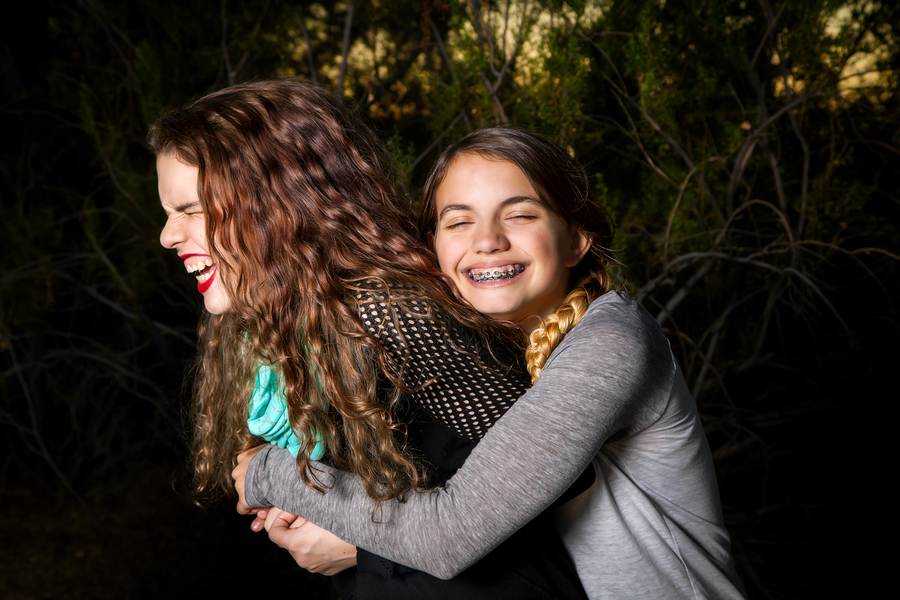Growing Up with an Eating Disorder
When an adolescent is diagnosed with an eating disorder, it is not just that child’s issue. Rather, an eating disorder is often considered a reflection of larger family dysfunction that has just most prominently manifested in one member. Understandably, much attention and energy is given to the diagnosed child. Driving to various doctor’s appointments, adapting grocery shopping lists and family meals to accommodate their meal plan, and experiencing their absence if they go to a day or residential program are just some of the ways eating disorder treatment impacts family rhythms. But it is also crucial to attend to siblings’ mental, emotional, and physical needs during this time.
The disharmony in a household profoundly alters the circumstances in which siblings are raised. Charlotte, now 26, was 9 when her 14-year-old sister Rebecca was diagnosed with an eating disorder. She reflects: “(The eating disorder) wasn’t mine, but that doesn’t mean that it didn’t change the way my life and my relationship with my sister unfolded significantly.” Charlotte felt like the eating disorder robbed her of her sister: “We lived in the same house, but the way we were when we were little, before the eating disorder, was put on pause. I had a sister physically in my house, but I did not have the benefits of having a sister, because she was busy with treatment. So it didn’t feel like I actually had a sister.”
Whether siblings have a positive relationship or not, there are powerful dynamics between them. Sarah, now 30, was 12 when her 15-year-old sister Lucy told her family that she was struggling with anorexia. She had sensed something was wrong–and not just with Lucy. When Lucy came out about her eating disorder, it led others in Sarah’s family to face struggles they had been repressing: “The devastation of my whole family came to light. There was lots going on in our household that was triggered. I felt overwhelmed by how terrible everything was.” But Sarah did not blame Lucy. She recognized that her parents’ substance issues and untended trauma contributed to the environmental discord, and understood that harmful food patterns existed in her family–as they do in many families–prior to the eating disorder’s emergence.
When children are little, parents often use food as a reward and/or a punishment. While seemingly a harmless parenting tactic, it can go too far and become a form of detrimental appetite control. For example, Sarah’s father used to time how fast his daughters ate, and if he didn’t think they ate fast enough, he sent them to bed without dessert. “We did not start off in a good place in terms of our relationship to food,” Sarah recalls.
Family members also model harmful behaviors for one another. For example, when one sibling engages in disordered eating behaviors, it can become seen as acceptable or effective way to get attention by other siblings. Several years into Lucy’s struggles, after “watching a lot of (eating disordered) behaviors,” Sarah herself became an emotional overeater in high school. She also struggled with substance abuse, which her parents engaged in as a way to cope with difficult emotions. She reflects, “That’s what I learned from my family about how to communicate pain.”
When a family experiences an eating disorder, body image is made an unavoidable focal point. In this context, siblings may be prone to make comparisons between bodies. This was a huge challenge for Charlotte, who “struggled to accept the differences between my developing body and my sister’s sick body.”
Siblings also witness how their parents respond to the eating disorder. When a child is so sick they require intensive treatment, both child and parents are absent from the home. When Lucy was hospitalized for medical stabilization, and then transferred to an eating disorder ward, Sarah’s mother went every day. Her father only went once, and Sarah herself went once. She recalls, “It was devastating to see her there. I wanted to get out of there, and I could, but my mom didn’t have that option.” Observing the toll it took on her mother, her father’s absence from the situation, and the blame that was single-handedly placed on her mother for Lucy’s disorder complicated Sarah’s relationship to her parents. For Sarah, as for many siblings, the situation forced her to grow up faster than her peers.
Everyone in the family will be affected in different ways, and need to find their own distinctive ways to deal with the ramifications of the eating disorder. To learn about copings strategies and support for siblings in families affected by an eating disorder, read Siblings and Eating Disorder Recovery, Part 2: Tips from Siblings, for Siblings.
If you or a member of your family might be struggling with an eating disorder, contact EDRS to learn more about possible sources of support.
For additional information on siblings and eating disorders, check out: https://www.anorexiabulimiacare.org.uk/family-and-friends/siblings



